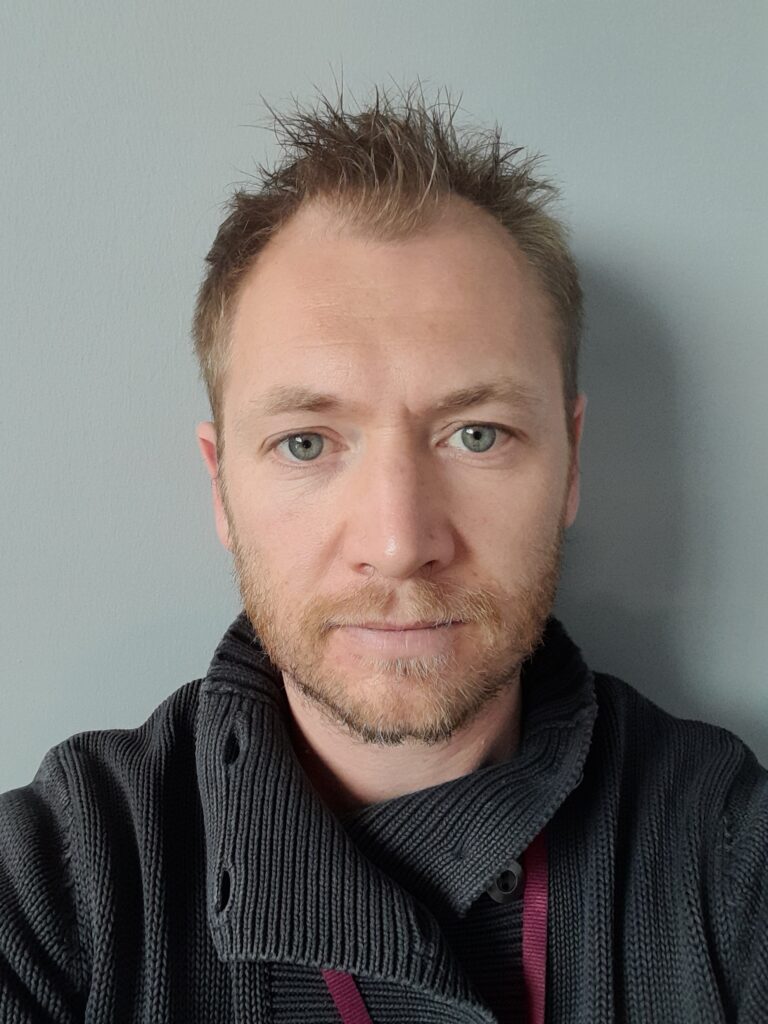
Scientific interest
My general interest is mesoscopic quantum physics. More specifically I want to understand the dynamics of mesoscopic systems such as diffusive Josephson junctions, carbon nanotube quantum dots or superconducting nanowires at microwave frequencies.
Biography
I completed my phd thesis in 2011 in the mesoscopic physics group of Hélène Bouchiat and Richard Deblock at the Laboratoire de Physique des solides from Université Paris Saclay. There i worked on two aspects of mesoscopic quantum physics regarding 1- the measurement of the very high frequency quantum noise of a carbon nanotube quantum dot exhibiting Kondo correlations and 2 – the measurement of the superconducting current-phase relation of a carbon nanotube based Josephson junction. You may find my phd manuscript here: « High frequency quantum noise of mesoscopic systems and current-phase relation of hybrid junctions« . In 2011, I moved to switzerland to realize a post-doc at ETH Zurich in collaboration with two groups of the physics department that are the Nanophysics group led by Klaus Ensslin and Thomas Ihn and the Qudev group led by Andreas Wallraff. In this post-doctoral work I played with single electrons confined in semiconductor quantum dots that we coupled to microwave light. We could observe 1- the genuine effects of a single shuffling electron on the properties of light confined in a cavity and 2- use the energy relaxation of individual electrons to generate photons. Since 2014, I am an assistant professor (with tenure) at the physics department of Université Paris Saclay working at the Laboratory de physique des Solides in the NS2 group. There I am involved in various activities in the field of quantum electrical circuits with the aim of understanding the high frequency quantum dynamics of mesoscopic systems such as Josephson junctions, tunnel junctions, quantum dots or superconducting nanowires.
Interests
- Microwave photonic
- Quantum noise
- Mesoscopic superconductivity
- Nanoelectronics
Education
- PhD in Condensed Matter, 2011 Université Paris Sud
| Teaching activities I am teaching a wide range of topics ranging from classical mechanics to superconductivity passing through Nanofabrication in clean room facilities and quantum Hall effect measurements at low temperature. |
| Superconducting qubit labwork – Master 1,2 ArteQ In this work students dive into the quantum hardware necessary to realize the coherent manipulation and readout of an artificial spin: the transmon qubit. Experimental tools used in this class include a dilution fridge (20 mK), microwave equipment (amplifiers, attenuators, circulators…), vectorial network analyzer, microwave sources and finally a Zynq UltraScale+ RFSoC ZCU216 for fast readout and pulses. The sample consists of a microwave readout cavity dispersively coupled to a transmon qubit in a planar geometry. The students learn how to realize the spectroscopy of the qubit and manipulate it. standard measurements include Rabi oscillations measurements, Ramsey fringes and the determination of relaxation and decoherence times. | 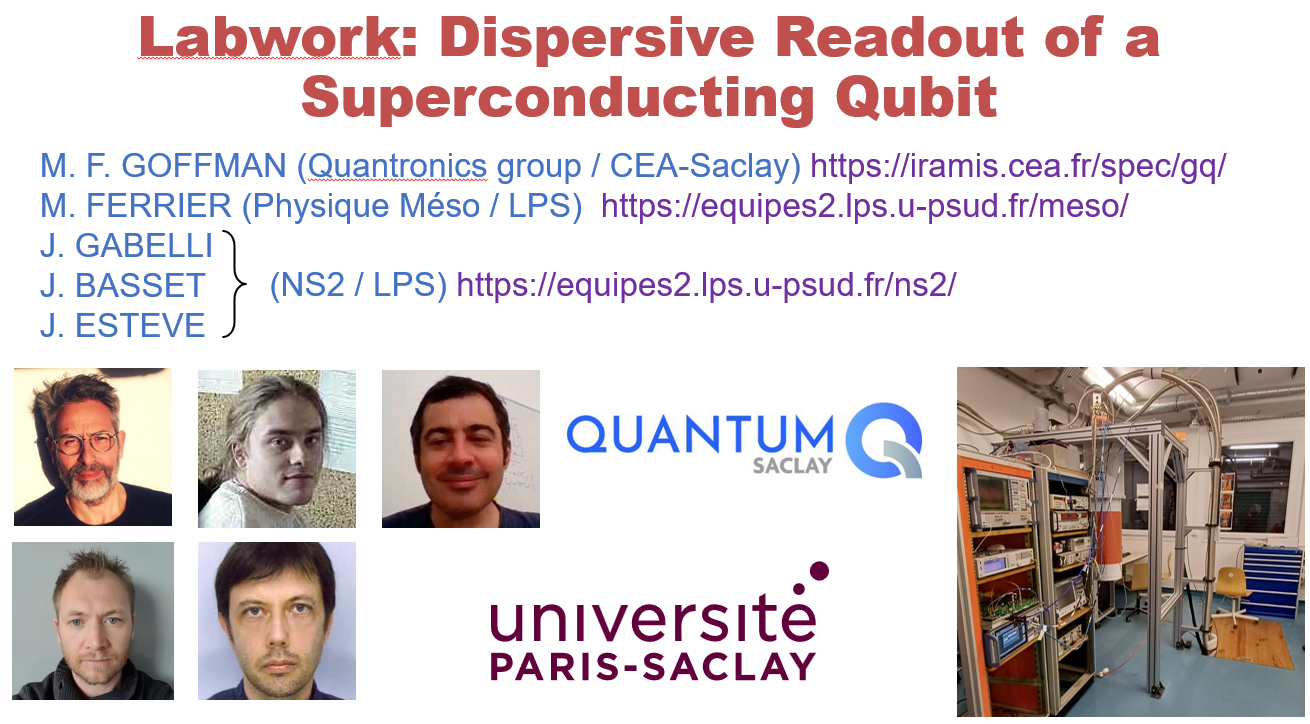 |
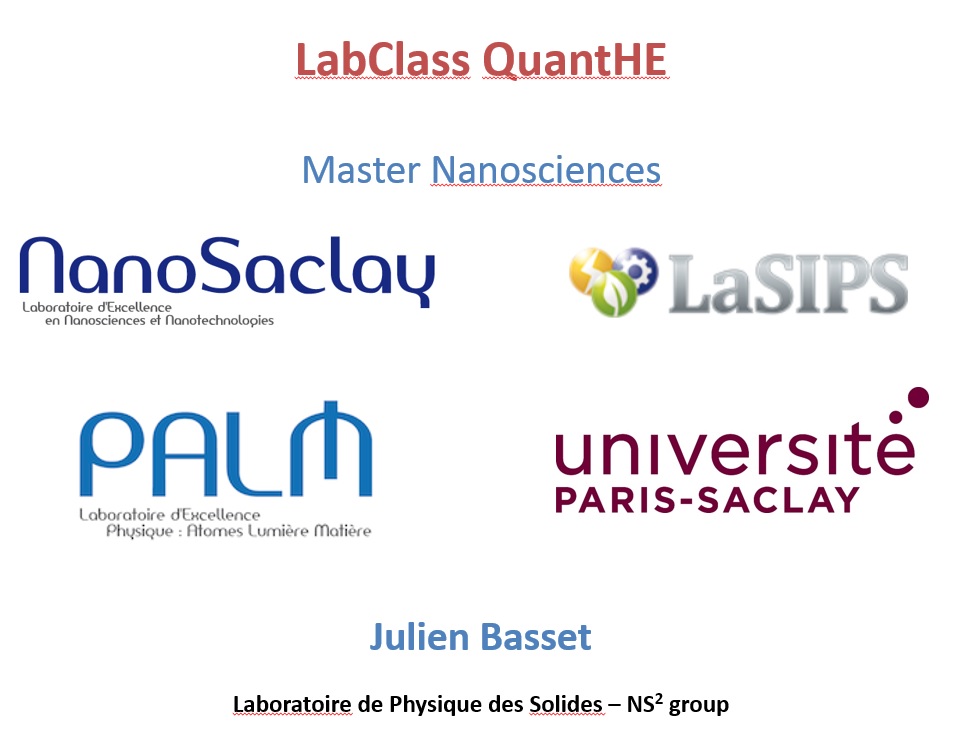 | Quantum Hall effect in graphene – Master 2 This lab class consists in fabricating in a clean room environment Hall bars in CVD graphene. The graphene is then used as a two-dimensional electron gas that we cool down to 4.2K in liquid Helium. We then characterize its electrical properties with respect to magnetic field highlighting successively quantum effects that are Shubnikov-de Haas oscillations and the famous quantum Hall effect at high field (5 Teslas). This labclass combines very technical aspects with nanofabrication and low-temperature measurements together with an important theoretical input to understand magnetotransport in graphene (Landau quantization, Landauer-Buttiker formalism). This labclass is benefitting from the support of Labex LaSips, NanoSaclay and Palm. Contacts: Julien Basset Documents: Slides, Notes |
| Carbon nanotube transistors – Master 2 In this lab class we fabricate in a clean room environment carbon-nanotubes based transistors with optical lithography, e-gun evaporation and lift-off techniques. We then characterize the fabricated devices with scanning electron microscope imaging and room-temperature electrical measurements. Contacts: Julien Basset, Adel Bousseksou, Guillaume Agnus, Sylvia Matzen | 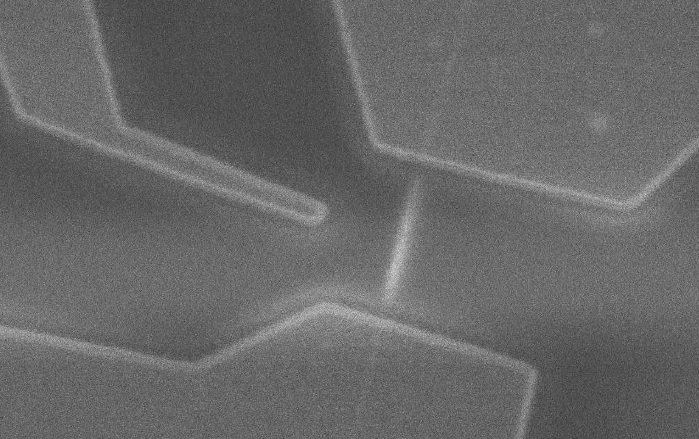 |
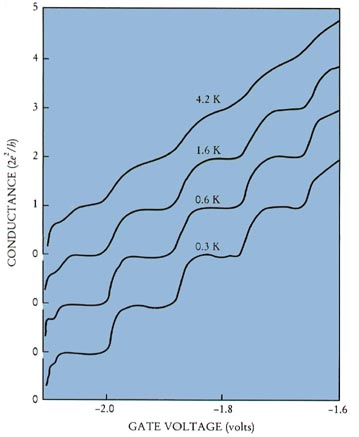 | Macroscopic Quantum Phenomena – Master 1 General Physics – Quarmen This course, theory lecture + exercises, proposes an introduction to spectacular macroscopic manifestations of quantum physics in matter. In the first part of the course, we will show how the common classical law of electricity are modified at the mesoscopic scale where quantum effects do play an important role and may have macroscopic consequences. In a second part we will study the quantum Hall effect that originates from ballistic edge transport in 2D systems submitted to a perpendicular magnetic field. In a last part, we will introduce the physics of superconductivity and condensates. At very low temperatures, various mechanisms can lead to macroscopic collective quantum states which have surprising properties such as zero-electrical resistance or magnetic levitation. This course will be based on many recent discoveries in this field which is one of the most active and innovative area in condensed matter physics today. Contacts: Julien Basset |
| Quantum Mechanics I – L3 Physics-Chemistry I am here teaching the exercises of quantum mechanics about the basic concepts of quantum mechanics. We in particular introduce the Schrödinger equation and the dirac formalism. Contacts: Julien Basset, Edwin Kermarrec | 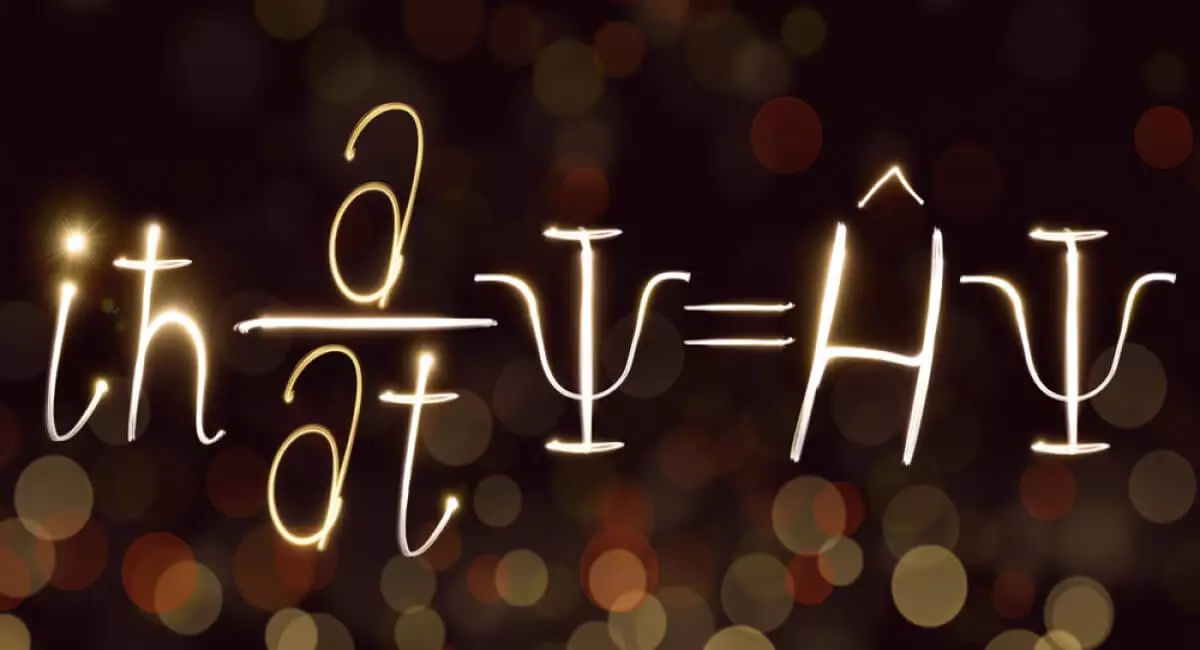 |
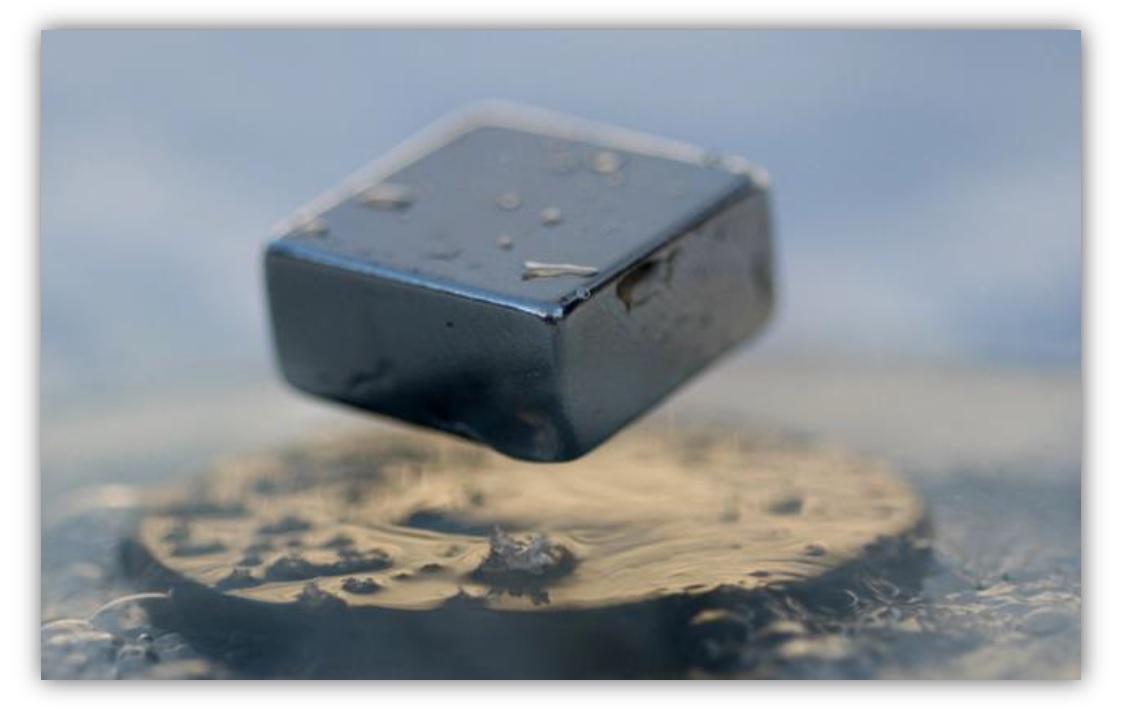 | Superconductivity – Master 1 This practical is divided in two experiments. In a first set of experiment the students have to measure the superconducting transition of YBaCuO while measuring the resistance versus temperature. This is done with a computer-controlled acquisition card and a cold stage that cools down to 40K. The second experiment consists in using a SQUID (Superconducting QUantum Interference Device) to measure the Earth’s magnetic field and fields generated by common magnets. The SQUID experiment allows to introduce fundamental concepts that are the Josephson effect and the flux quantization. Contacts: Julien Basset, Francesca Chiodi, Odile Stephan, Edwin Kermarrec Documents: Handout |
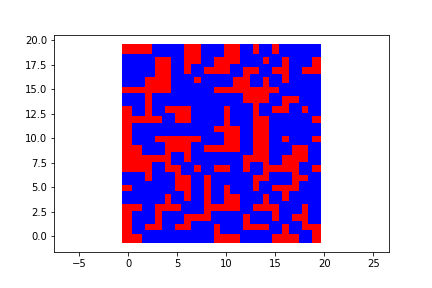 | Python Monte Carlo simulation of the 2D spin Ising model – Master 1 This numerical project realized with Python aims at emulating the magnetic phase transition that occurs in a two-dimensional array of classical spins at the Curie temperature. This is done by using a Monte Carlo algorithm and the goal is to extract critical exponents.. Contacts: Julien Basset, Edwin Kermarrec Documents: Handout |
| Waves – L2 Polytech In these exercice and lab classes, we treat fundamental concepts related to scalar waves. We start introducing definitions of propagating longitudinal waves and transversal waves to finally end with stationnary waves, eigen modes concepts and interferences. Throughout the lecture, we make use of microscopic models to derive d’Alembert’s wave equation for sound and wave on a string. We then use this equation to find and use dispersion relations of different propagating media. Contacts: Julien Basset, Pascal Simon Documents: Lecture, Exercises , LabClass |  |
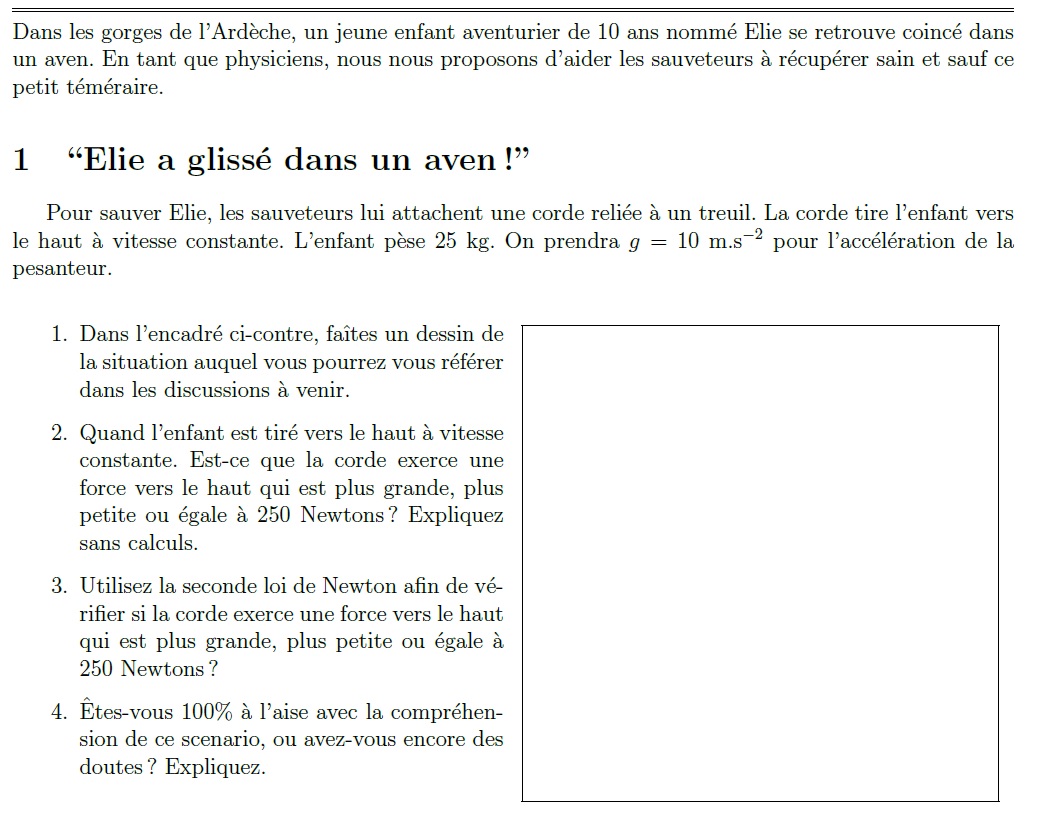 | Mechanics I – L1S1 We introduce fundamental concepts of classical mechanics such as forces, Newton’s laws, kinetic energy theorem, work, potential energy. Fundamental mathematics tools are used for the first time such as differential equations of the first and second kinds. This allows us to treat friction and oscillating behaviours. The exercise class system has evolved since few years with the introduction of « tutorials » as a new pedagogical tool. Contact: Julien Basset, Arne Keller Documents: Exercises , Lecture Notes |
| Mechanics II – L1S2 Starting from the basic knowledge of mechanics I we further introduce polar, cylindrical, spherical and intrinsic coordinates. We treat non-galilean referentials with the concept of inertial forces. Other fundamental tools such as kinetic momentum, force momentum and the kinetic momentum theorem are introduced. Finally the moment of inertia is treated to deal with extended objects. Contacts: Julien Basset, Miguel Monteverde Documents: Exercises | 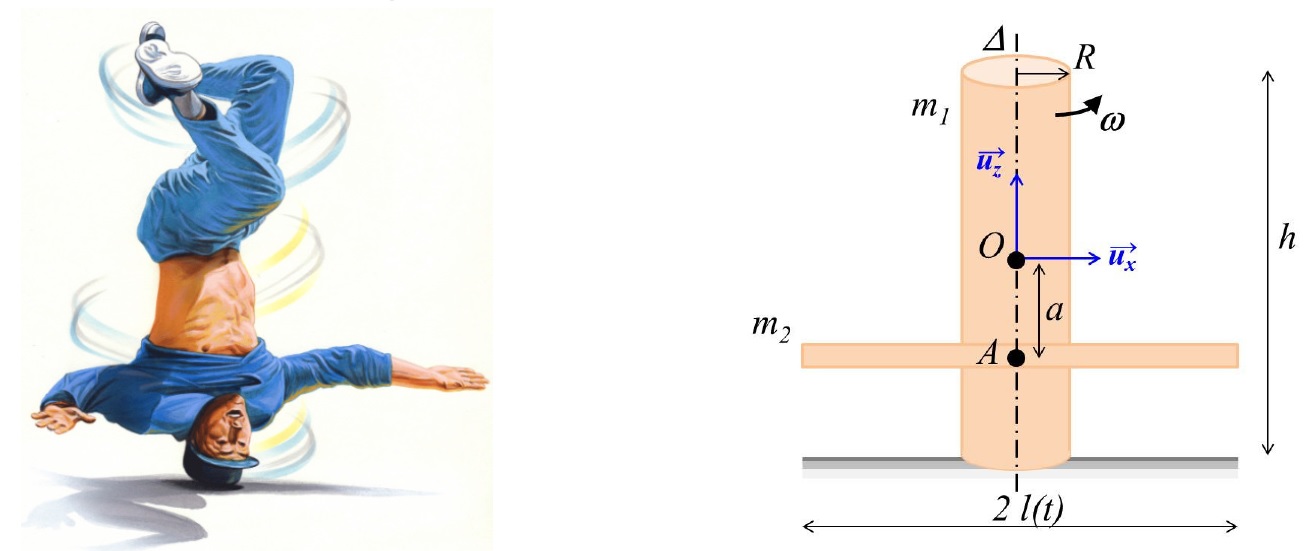 https://www.youtube.com/embed/UYAB0HsXzrc |
 | Methodology – L1S2 In this lecture we introduce methods to solve simple physics problems for which one a priori has no clue about the answer. This lecture talks about Fermi questions, orders of magnitudes, error propagation… We also use this lecture to realize a mechanical pendulum with smartphones thanks to the application Phyphox. The experimental data are then treated numerically and compared to the theory. At the end of the lecture, the students present one of the major topics of the class in front of their colleagues as an exercise to communicate in front of a crowd. Contacts: Julien Basset, Emmanuelle Rio Documents: Handout |
| Free Physics projects – L3S2 The principle of these projects is to let the students conceive and build their own experiment using sensors and tools available in the student lab. The data acquisition is done using Arduino cards, a free and inexpensive technology. At the end the students can share their TP on the open TP platform. These projects promote autonomy and is close from the work of researchers in laboratories. Contacts: Julien Basset, Frederic Bouquet | 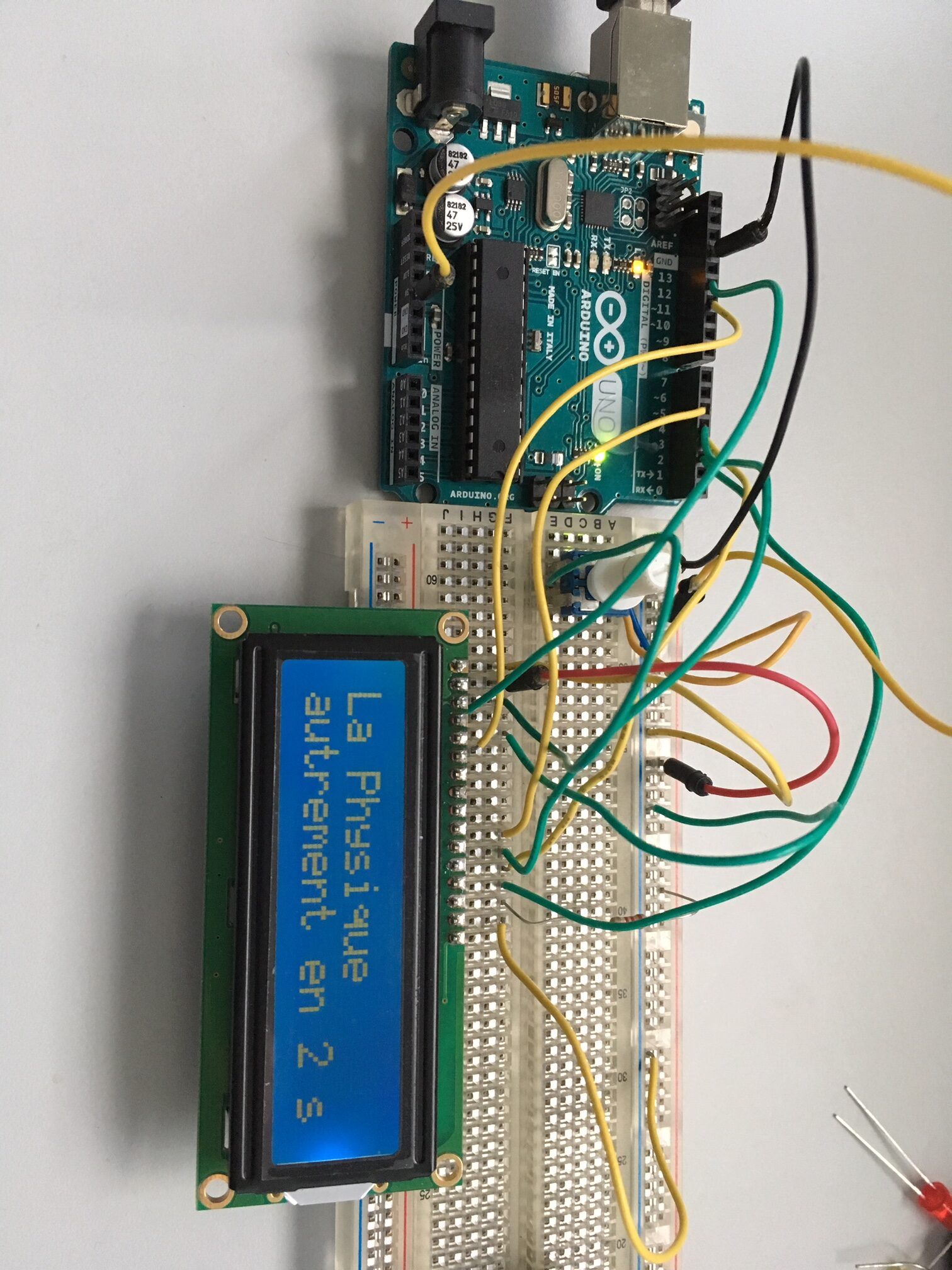 |
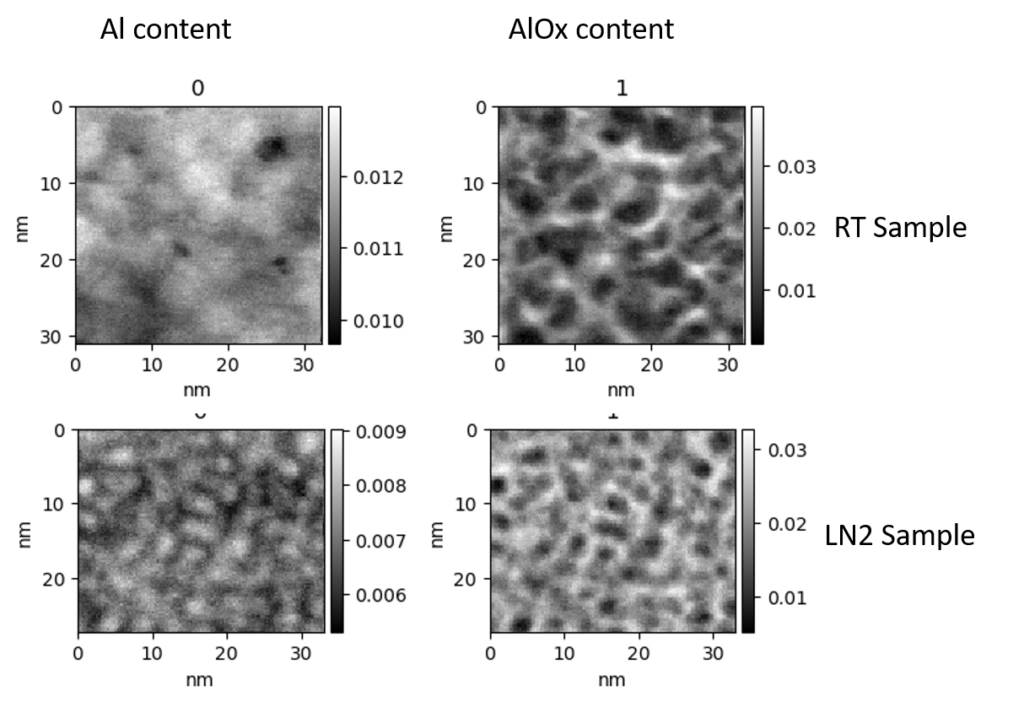
Single microwave photon detection using disordered superconductors
In recent years, high kinetic inductance superconducting materials (HKIM) have gained a lot of interest in quantum circuit technologies. Operated in the microwave frequency domain they allow to engineer high impedance circuits providing an efficient way to e.g. increase the coherence time of superconducting quantum bits or couple electron charge and spins to microwave photons. This research project proposes to extend the prominent role of high kinetic inductance superconducting materials in quantum technologies by building a high kinetic inductance-based single microwave photon detector. The detection principle will be based on the large coupling of a single tunnel junction to a microwave resonator enabled by the use of high kinetic inductance superconducting materials in the fabrication process. The developed material will consist in superconducting granular aluminum which is compatible with optical and e-beam lithography and has already shown attractive microwave properties. This situation allows to efficiently convert a microwave photon into a single charge with a quantum efficiency close to unity. The charge is then detected using standard electrometry techniques. Up-to-now, this type of device only exists for photons with frequencies in the optical domain. Extending such a fundamental quantum detector to the microwave domain will open many new possibilities in quantum optics and quantum information processing with microwave photons.
Quantum bath engineering of a high impedance microwave mode through quasiparticle tunneling. Nature Communications, 13(1): 7146. DOI: https://doi.org/10.1038/s41467-022-34762-z
Research funded by ANR, DIM Sirteq, Labex PALM

Dynamics and gating of fully metallic Josephson junctions
We study the reduction of the supercurrent by a gate electrode in a purely metallic superconductor–normal
metal–superconductor Josephson junction by performing, on the same device, a detailed investigation of the
gate-dependent switching probability together with the local tunneling spectroscopy of the normal metal. We
demonstrate that high energy electrons leaking from the gate trigger the reduction of the critical current
which is accompanied by an important broadening of the switching histograms. The switching rates are well
described by an activation formula including an additional term accounting for the injection of rare high energy
electrons from the gate. The rate of electrons obtained from the fit remarkably coincides with the independently
measured leakage current. Concomitantly, a negligible elevation of the local temperature in the junction is found
by tunneling spectroscopy which excludes stationary heating induced by the leakage current as a possible
explanation of the reduction of the critical current. This incompatibility is resolved by the fact that phase
dynamics and thermalization effects occur at different timescales.
https://journals.aps.org/prresearch/abstract/10.1103/PhysRevResearch.3.043169

Microwave photon emission in double quantum dot systems
We explore the microwave radiation emitted from a biased double quantum dot due to the inelastic tunneling of single charges. Radiation is detected over a broad range of detuning configurations between the dot energy levels, with pronounced maxima occurring in resonance with a capacitively coupled transmission line resonator. The power emitted for forward and reverse resonant detuning is found to be in good agreement with a rate equation model, which considers the hybridization of the individual dot charge states.
https://journals.aps.org/prl/abstract/10.1103/PhysRevLett.115.046802
Preprint(s)
Near-ideal Microwave Photon to Electron Conversion in a High Impedance Quantum Circuit
Ognjen Stanisavljević, Jean-Côme Philippe, Julien Gabelli, Marco Aprili, Jérôme Estève, Julien Basset
arXiv:2312.14065 (2023)
Publications
| 2024 Cinzia Di Giorgio, Elena Blundo, Julien Basset, Giorgio Pettinari, Marco Felici, Charis H. L. Quay, Stanislas Rohart, Antonio Polimeni, Fabrizio Bobba, Marco Aprili Imaging the Quantum Capacitance of Strained MoS2 Monolayer by Electrostatic Force Microscopy ACS Nano 10, 1021 (2024) arXiv:2205.1084 2023 Février, P., Basset, J., Estève, J., Aprili, M., & Gabelli, J. (2023). Role of optical rectification in photon-assisted tunneling current. Communications Physics, 6(1), 29. (2023). |
| 2022 Aiello, G., Féchant, M., Morvan, A., Basset, J., Aprili, M., Gabelli, J., & Estève, J. Quantum bath engineering of a high impedance microwave mode through quasiparticle tunneling. Nature Communications, 13(1), 7146. (2022) |
| 2021 Basset, J., Stanisavljević, O., Kuzmanović, M., Gabelli, J., Quay, C. H. L., Estève, J., & Aprili, M. Gate-assisted phase fluctuations in all-metallic Josephson junctions. Physical Review Research, 3(4), 043169. (2021) |
| 2020 Ferrier, M., Delagrange, R., Basset, J., Bouchiat, H., Arakawa, T., Hata, T., Fujiwara, R., Teratani, Y., Sakano, R., Oguri, A., Kobayashi, K., & Deblock, R. (2020). Quantum Noise in Carbon Nanotubes as a Probe of Correlations in the Kondo Regime. Journal of Low Temperature Physics, 201(5–6), 738–771. https://doi.org/10.1007/s10909-019-02232-4 |
| 2019 J. Basset, M. Kuzmanovic, P. Virtanen, T. T. Heikkila, J. Esteve, J. Gabelli, C. Strunk and M. Aprili Nonadiabatic Dynamics of Strongly Driven Diffusive Josephson Junctions Phys. Rev. Research (Rap. comm.) 1, 032009 (2019) M. Ferrier, R. Delagrange, J. Basset, H. Bouchiat, T. Arakawa, T. Hata, R. Fujiwara, Y. Teratani, R. Sakano, A. Oguri, K. Kobayashi and R. Deblock Quantum noise in carbon nanotubes as a probe of correlations in the Kondo regime Journal of low temperature physics 10, 1007 (2019) J. Basset, D. Watfa, G. Aiello, M. Fechant, A. Morvan, J. Esteve, J. Gabelli, M. Aprili, R. Weil, A. Kasumov, H. Bouchiat and R. Deblock High Kinetic Inductance Microwave Resonators Made by He-Beam Assisted Deposition of Tungsten Nanowires App. Phys. Lett. 114, 102601 (2019) A. Murani, B. Dassonneville, A. Kasumov, J. Basset, M. Ferrier, R. Deblock, S. Gueron and H. Bouchiat Microwave Signature of Topological Andreev level Crossings in a Bismuth-based Josephson Junction Phys. Rev. Letters 122, 076802 (2019) |
| 2018 R. Delagrange, J. Basset, H. Bouchiat, R. Deblock Emission noise and high frequency cut-off of the Kondo effect in a quantum dot Phys. Rev. B (Rap. comm.) 97, 041412 (2018) |
| 2016 A. Hofmann, V. F. Maisi, J. Basset, C. Reichl, W. Wegscheider, T. Ihn, K. Ensslin, C. Jarzynski Heat dissipation and fluctuations in a driven quantum dot Phys. Stat. Sol. B 10.1002/pssb201600546 (2016) A. Hofmann, V. F. Maisi, C. Gold, T. Kraehenmann, C. Roessler, J. Basset, P. Maerki, C. Reichl, W. Wegscheider, K. Ensslin, T. Ihn Measuring the degeneracy of discrete energy levels using a GaAs/AlGaAs quantum dot Phys. Rev. Lett 117, 206803 (2016) V. F. Maisi, A. Hofmann, M. Roosli, J. Basset, C. Reichl, W. Wegscheider, T. Ihn, K. Ensslin Spin orbit coupling at the level of a single electron Phys. Rev. Lett 116, 136803 (2016) A. Hofmann, V. F. Maisi, C. Roessler, J. Basset, T. Kraehenmann, P. Maerki, T. Ihn, K. Ensslin, C. Reichl, W. Wegscheider Equilibrium free energy measurement of a confined electron driven out of equilibrium Phys. Rev. B 93, 035425 (2016) |
| 2015 A. Stockklauser, V. F. Maisi, J. Basset, K. Cujia, C. Reichl, W. Wegscheider, T. Ihn, A. Wallraff, K. Ensslin Microwave Emission from Hybridized States in a Semiconductor Charge Qubit Phys. Rev. Lett. 115, 046802 (2015) |
| 2014 C. Rœssler, S. Burkhard, T. Krahenmann, M. Roosli, P. Marki, J. Basset, T. Ihn, K. Ensslin, C. Reichl, W. Wegscheider Spectroscopy of Equilibrium and Non-Equilibrium Charge Transfer in Semiconductor Quantum Structures Phys. Rev. B 90, 081302(R) (2014) J. Basset, A. Stockklauser, D.-D. Jarausch, T. Frey, C. Reichl, W. Wegscheider, A. Wallraff, K. Ensslin and T.M. Ihn, Evaluating charge noise acting on semiconductor quantum dots in the circuit quantum electrodynamics architecture Appl. Phys. Lett. 105, 063105 (2014) J. Basset, R. Delagrange, R. Weil, A. Kasumov, H. Bouchiat, R. Deblock Joint measurement of current-phase relations and transport properties of hybrid junctions using a three junctions superconducting quantum interference device J. Appl. Phys. 116, 02431 (2014) |
| 2013 J. Basset, D.-D. Jarausch, A. Stockklauser, T. Frey, C. Reichl, W. Wegscheider, T.M. Ihn, K. Ensslin and A. Wallraff Single-electron double quantum dot dipole-coupled to a single photonic mode Phys. Rev. B 88, 125312 (2013) |
| 2012 J. Basset, A.Yu. Kasumov, C.P. Moca, G. Zarand, P. Simon, H. Bouchiat and R. Deblock Measurement of Quantum Noise in a Carbon Nanotube Quantum Dot in the Kondo Regime Phys.Rev.Lett. 108, 046802 (2012) J. Basset, H. Bouchiat and R. Deblock High-frequency quantum admittance and noise measurement with an on-chip resonant circuit Phys.Rev.B. 85, 085435 (2012) |
| 2010 J. Basset, H. Bouchiat and R. Deblock Emission and Absorption Quantum Noise Measurement with an On-Chip Resonant Circuit Phys.Rev.Lett. 105, 166801 (2010) J. Basset, Z. Wei and M. Tsoi Current-induced reorientation of exchange bias on a nanoscale IEEE Transactions on magnetics, Vol. 46, No. 6, (2010) |
| 2009 Z. Wei, J. Basset, A. Sharma, J. Bass and M. Tsoi Spin-transfer interactions in exchange-biased spin valves J. Appl. Phys. 105, 07D108 (2009) |
| 2008 J. Basset, A. Sharma, Z. Wei, J. Bass and M. Tsoi Toward antiferromagnetic metal spintronics Proc. SPIE 7036, Spintronics, 703605 (2008) |
Contact
- julien.basset@universite-paris-saclay.fr
- +33 (0) 1 69 15 80 11
- Laboratoire de Physique des Solides – Université Paris Saclay – Building 510, 1, rue Nicolas Appert 91405 Orsay Cedex
| 09/2014 – Today | University Lecturer at Université Paris Saclay |
| 11/2011 – 08/2014 | Joint Post-Doc between the Ensslin group and Wallraff group at ETH Zürich |
| 09/2008 – 10/2011 | PhD Thesis in the Hélène Bouchiat’s group at the laboratoire de physique des solides, Orsay (France): High frequency quantum noise of mesoscopic systems and current-phase relation of hybrid junctions |
| 03/2008 – 07/2008 | Master thesis in Maxim Tsoi lab at UT Austin (Texas-USA) |